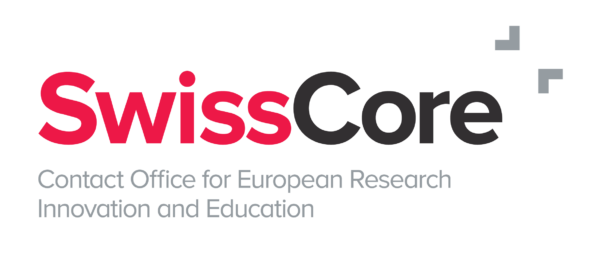The EU Commission invites Member States to join a risk assessment of four critical technologies and adopts an update of the Strategic Energy Technology Plan.
October saw a flurry of European Commission (EC) activities in the area of strategic technologies and policies. On 3 October, the EC adopted a Recommendation on critical technology areas for the EU’s economic security. The EC recommends that Member States, together with the EC, conduct a collective risk assessment of 4 critical technology areas by the end of this year. The goal is to assess the risks these technologies pose as such, as well as related to the potential leakage of critical technologies amid geopolitical tensions. The new EC Recommendation is based on the European Economic Security Strategy from June 2023, which focuses on “minimising risks arising from certain economic flows in the context of increased geopolitical tensions and accelerated technological shifts, while preserving maximum levels of economic openness and dynamism”. Thierry Breton, Commissioner for the Internal Market, commented on the new EC Recommendation that “we need to continuously monitor our critical technologies, assess our risk exposure and – as and when necessary – take measures to preserve our strategic interests and our security”. He underlined that “Europe is adapting to the new geopolitical realities, putting an end to the era of naivety and acting as a real geopolitical power”.
The Commission analysed ten critical technologies based on criteria like their enabling or transformative nature, e.g., the technologies’ potential and relevance for driving significant increases of performance and efficiency and/or radical changes for sectors or capabilities. Other criteria included a potential risk of civil and military sectors fusion, namely the potential to advance both domains, as well as risk of uses of certain technologies to undermine peace and security and the risk of the technology to be used in violation of human rights. From this list of 10 critical technologies, the EC selected the 4 technology areas with the highest likelihood of presenting the most sensitive and immediate risks related to technology security and technology leakage. Thus, the joint risk assessment proposed by the EC covers the following 4 technology areas:
- Advanced Semiconductors technologies, including microelectronics, photonics, high frequency chips, semiconductor manufacturing equipment
- Artificial Intelligence technologies, especially high performance computing, cloud and edge computing, data analytics, computer vision, language processing, object recognition
- Quantum technologies, including quantum computing, quantum cryptography, quantum communications, quantum sensing and radar
- Biotechnologies, namely techniques of genetic modification, new genomic techniques, gene-drive, synthetic biology
EC Vice-President Věra Jourová, responsible for values and transparency, stressed that “technology is currently at the heart of geopolitical competition and the EU wants to be a player, and not a playground”. She advocated for a joint approach of EC and Member States: “To be a player, we need a united EU position, based on a common assessment of the risks. With this approach we will remain an open and predictable global partner, but one who nurtures its technological edge and addresses its dependencies.” The EC Recommendation clearly states that the selection of the critical technology areas as such will not prejudge the outcome of the risk assessment: “Only the outcome of the detailed collective assessment of the level and nature of the risks presented can serve as the basis for a further discussion on the need for any precise and proportionate measures to promote, partner or protect on any of these technology areas.” Related to the topic of critical technologies, the Commission Expert Group on the Economic and Societal Impact of Research and Innovation (ESIR) published a report on research, technology and innovation policy against the backdrop of geopolitical competition in October (see SwissCore article).
On 20 October, the EC addressed another strategic technology area – by adopting a revision of the Strategic Energy Technology (SET) Plan for Europe’s clean, secure and competitive energy future. The revision will help to better harmonise the SET Plan objectives with the European Green Deal, the REPowerEU Plan, the Green Deal Industrial Plan, and the Net-Zero Industry Act. Iliana Ivanova, Commissioner for Innovation, Research, Culture, Education and Youth pointed out that “the revision of the SET Plan contributes significantly to building a sustainable, low-carbon future and supporting Europe’s strategic net-zero energy technologies”.
The revised SET Plan is aligned with the Clean Energy Transition Partnership co-funded by Horizon Europe and national governments and the European Research Area Policy Agenda 2022-2024, especially its action 12, which aims to accelerate the green and digital transitions of Europe’s key industrial ecosystems: The new SET Plan includes the establishment of a dedicated workstream on hydrogen to implement the ‘ERA pilot on Green Hydrogen’. Furthermore, the new plan intends to forge cooperation between the European Technology and Innovation Platforms and the European industrial alliances, including the Battery Alliance, the Clean Hydrogen Alliance, and the Solar PV Industry Alliance. The Commission hopes that “this will foster investment and will reinforce manufacturing capacity in clean energy technologies. It will also address market, regulatory, infrastructure, and technological challenges that currently hinder their widespread adoption.” Closely related to the SET Plan, the EC also adopted a European Wind Power Action Plan on 24 October, which foresees increased support for research and innovation in the wind manufacturing sector.
October also occupied EU institutions with the upcoming 2024 budget of the EU. On 18 October, the EU Parliament (EP) adopted its budget position ahead of negotiations with EU Member States. The Council of the EU agreed its position already before the summer break in July, asking to reduce budgets for Horizon Europe (by €166 million) and the Digital Europe Programme (€20 million) compared to the EC budget proposal, while keeping the budget for Erasmus+ stable. The EP position in October reversed the cuts proposed by the Council in its negotiating stance to the level of the original draft budget proposed by the Commission. In addition, the EP asks for higher budgets to support Ukraine and alleviate high energy prices. The EP’s proposal includes a boost for Erasmus+ to account for higher inflation and higher living costs and to make the programme more inclusive. Council and EP started negotiations on the budget on 24 October and will have to reach a compromise within 21 days.
Further, October saw a decision by the EC to extend Horizon Europe call deadlines “in light of the disruptions caused by the fallout of Hamas’ terrorist attacks across Israel”. ERC and EIC call deadlines will be extended by one to three weeks this autumn. The deadlines are extended for all applicants, irrespective of the country where they are based.

